WORLD CLASS COACHING
Winning With Inverted Fullbacks - Attacking
By Luca Bertolini
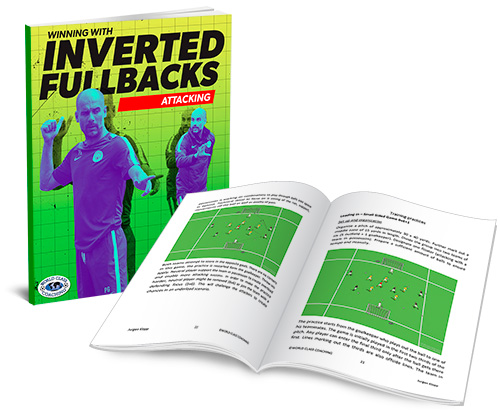
Table of Contents
PART THREE
POSSESSION PHASE
Exercise 3: from 1 v 2 to 2 v 1 duels to finish or 2 v 2
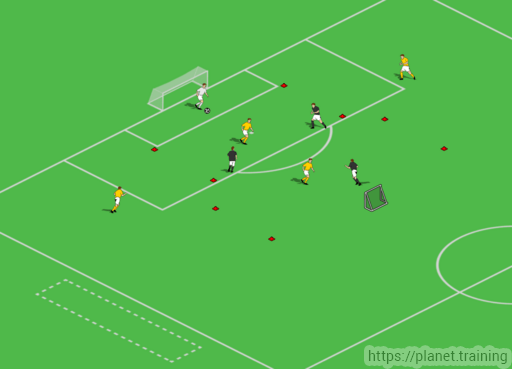
Two squares are placed inside and outside the penalty area.
One defender is outnumbered, playing 1 v 2 inside the first square at the beginning.
One midfielder and another forward are placed inside the outer square.
Two fullbacks are placed wide and out of the penalty area.
The goalkeeper is in possession of the ball.
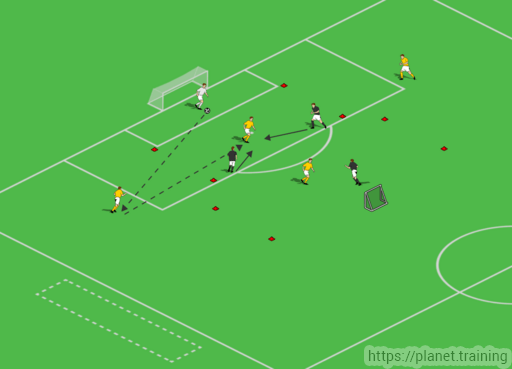
The goalkeeper passes the ball toward one fullback out of the penalty area; as he receives, he must pass the ball toward the center cone's area, where the outnumbered defender must control and save the possession.
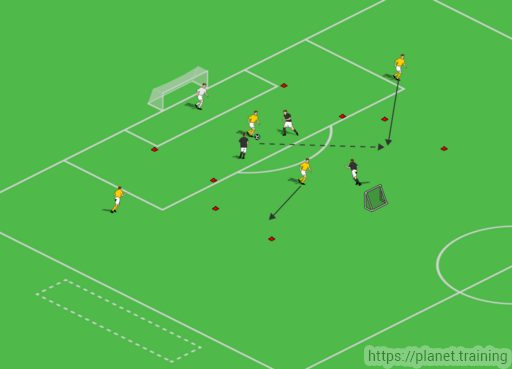
As the center defender receives, the opposite fullback must run inside the upper cones’ area to create a 2 v 1 duel.
His teammate must move to be unmarked.
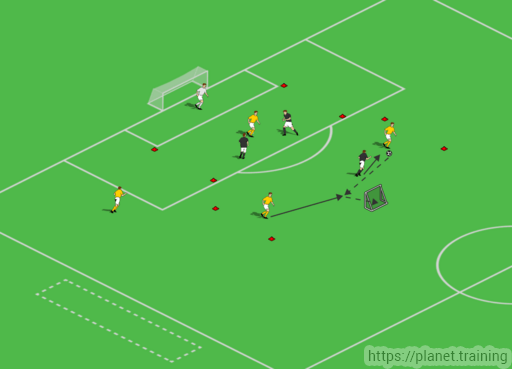
The move must be finished in the mini goal, as the fullback must pass the ball on the run of his teammate toward the center.
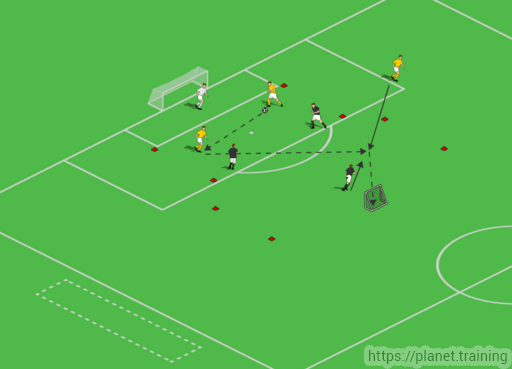
If the forwards win the possession they play 2 v 2 to finish and to score in the regular goal with the goalkeeper, inside the lower cone's area.
The fullback who started the sequence must equalize the number of players.
Variation:
• The center defender decides the fullback who must receive, running toward him, to play a fast passing combination and to send the ball forward
• If the forwards win the possession they play 2 v 3 to finish; this rule makes the recovery of the ball harder for the defender
Eye on:
• Speed of play to win the 1 v 2 duel to build up or the 2 v 1 duel to finish
• Timing of run without the ball of the opposite fullback
• Skill to be unmarked in the center to finish
• Passing combinations to win the counter attacking duels
The "inverted fullback" during the possession phases; let the midfielders play.
The first goal, and maybe the most important goal, of the modern inverted fullbacks tactic is to create numerical, qualitative and positional advantages against the opposition inside the middle third.
This goal comes from the basic idea to build up the moves and to play out from the back and with safe but concrete possession of the ball.
Numerical advantage: create numerical advantage near the ball to make the possession phase safe.
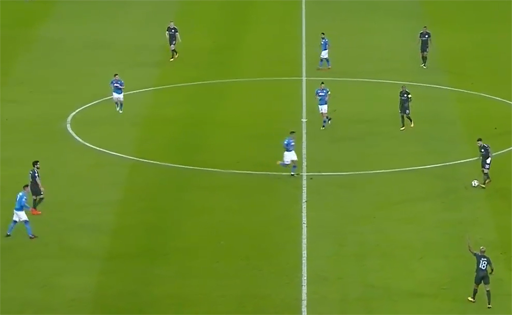
This is a picture of a Champions League match that Man City played against Napoli. Otamendi, the left fullback of a line of three at the back, is in possession in the middle third, and he creates a 4 v 3 situation to manage the possession.
The other three of the midfield line are Delph (on the left), Fernandinho (on his right) and Danilo (wide on the right).
This way the other two center midfielders, Gundogan and De Bruyne can stay place higher on the field and they can decide to play between the lines or to support the forwards.
Qualitative advantage: place the best 1 v 1 skilled players in the right positions to be decisive
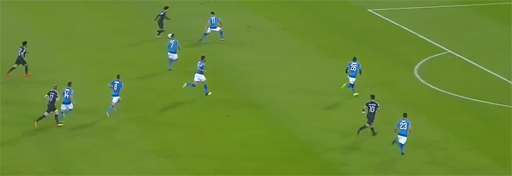
This is another picture of the same Champions League match that Man City played against Napoli.
In this move Leroy Sanè, one of the most skilled player in dribbling and mastering the ball, can play 1 v 1 against a defender toward the opposition goal.
These kinds of players are usually placed wide at the beginning of the final stage of the attacking moves, and then they run toward or to dribble toward the opposition goal, playing 1 v 1 against the defenders.
At this stage of the attacks, these duels can become outnumbered situations 1 v 2, as in this picture, where Aguero is facing two Liverpool's defenders during a Premier League match.
Guardiola often invites the opposition's pressure deep, to free a support player from the back, when the moves must be finsihed.
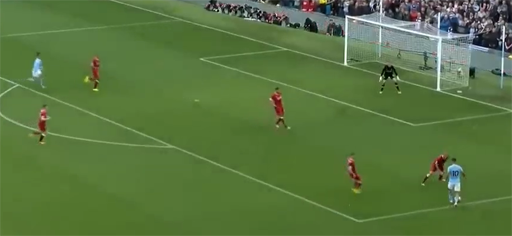
Positional advantage: place as many players as possible in a suitable position to finish.
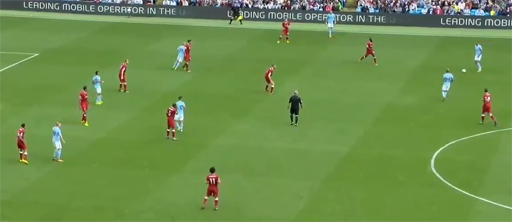
As the play out phase has been carried out also through an inverted fullback, two of the advanced midfielders are now able to play very high on the field.
In this picture, Silva and De Bruyne are placed along the defense lane of Liverpool, so they can either drop back to receive unmarked, or they can attack the opposition goal together with the forwards.

In this second picture, two forwards are in positional advantage, even if they are outnumbered 2 v 4, as they can face the opposition goal, exploiting the spaces among Liverpool's defenders and also behind them.
One player in the lower part of the middle third must always be a support for the team, to create numerical advantage and to make the possession phase safe.
This is the basic concept of the positional play in general, not only of Guardiola's positional play.
The numerical advantage is always an important principle of play.
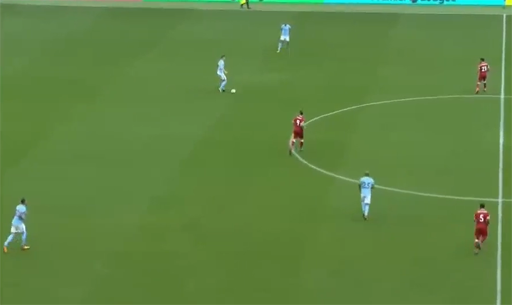
This could be a possible positional game to coach this situation.
Exercise 4: 3 v 1 duel at the beginning and 3 v 2 in the second phase, to keep the numerical advantage at every stage.

Three players are in possession of the ball and they are placed along one of the shorter sides of a rectangle.
One defender is facing them and two others are placed along the other shorter side of the rectangle.
The players in possession must be able to send the ball toward a free player, who is placed between the defense lines and then they must receive another pass from him to change the side of play.
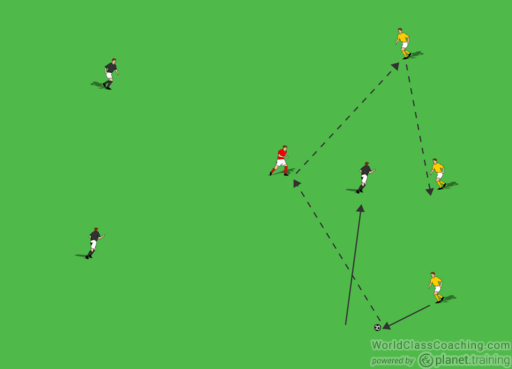
If the defenders win the possession, they play the same way from the opposite side.
It is very clear how the inverted fullbacks allow the creation of a numerical advantage and how they allow playing out with safe possession against all the types of opposition attacks together with the center midfielder; both if the opposition has two or three forwards in the starting line.
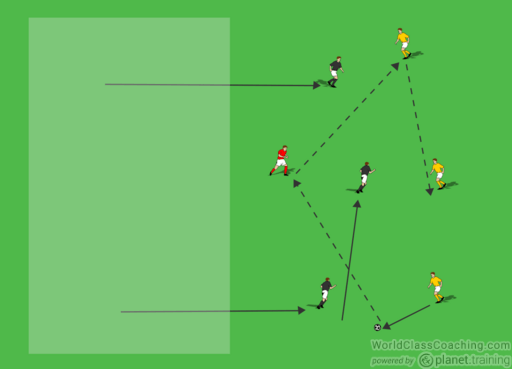
If the opposition tries to put high and strong pressure with more players, if the play out is enough fast, free spaces can be exploited in the upper part of the middle third and in the final third as consequence.
Eye on:
• Timing of runs without the ball of the opposite fullback
• Passing combinations to pass the ball among all the players and through the red free player
• Stay balanced when the possession is lost
If both the fullbacks run or dribble inside the field, the central midfielders are allowed to move higher up to support the forwards, and they are free to play between the opponents’ defense and midfield lines to receive the ball.
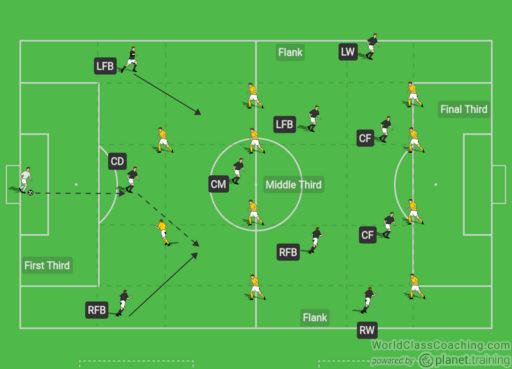
The second goal, in the upper area of the middle third, is to free the best quality players, as they don't have to build up the moves, but they "just" have to bring the moves to the final stage near or inside the final third.
As these players are free to play, the opposition's defense phase of play is supposed to be unbalanced.
The opposition’s center backs must decide if they have to put pressure or to stay balanced inside the defense lines, leaving space at the back or in front of them.
If we go back to the seasons of Pep Guardiola as manager of Bayern Munich, four or five players were often free to play and to exchange their positions in the middle third.
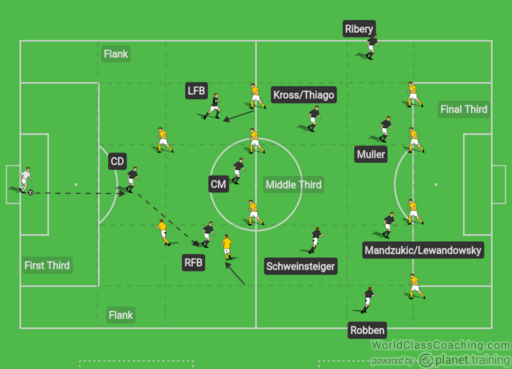
If we think about the seasons of Pep Guardiola with Manchester City, David Silva, Kevin De Bruyne, and Ilkay Gundogan are the players who are taking the main advantages, as they are free to play and to exchange the position on the field at every possession phase.
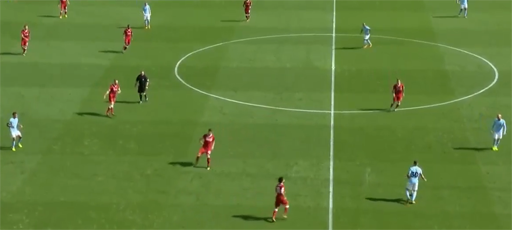
Otamendi is in possession in the middle third; Silva decides to play as playmaker in addition to Fernandinho.
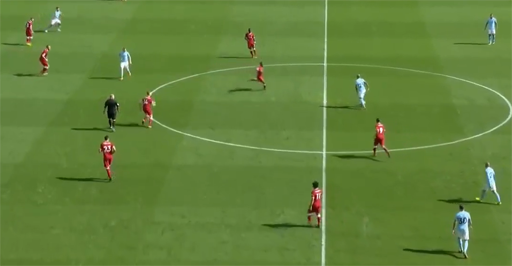
And De Bruyne is free to play on the forwards’ line, before dropping back between the opposition’s lines.
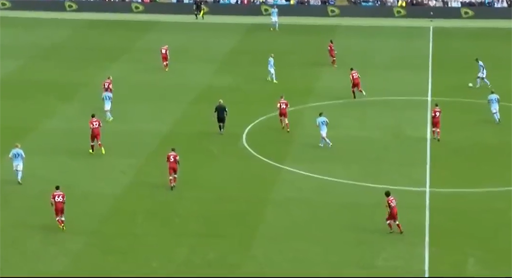
Here Danilo is on the ball inside the field, David Silva is playing between the opposition lines.
De Bruyne is on the forwards’ line and he could attack the depth over the last opposition defense line
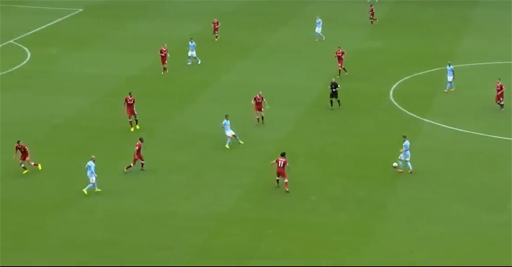
Here again Otamendi is in possession, Gabriel Jesus drops back. David Silva and De Bruyne can play as outside forwards on the left and on the right, together with Aguero in the center.
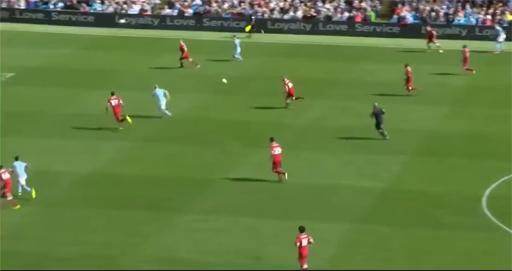
In this move, De Bruyne attacks the depth, exploiting the spaces that were created by the opposition defense, as they had to decide if to put pressure on the midfielders or to cover the spaces toward their own goal; and it's very clear how they are now on late.
If we would have to sum up the advantages for the free midfielders, we would write:
• enough time and space to exploit.
• the option to play together with the forwards
• the option to play wide and create a numerical advantage together with the wingers against the opposition’s fullback, helping the 1 v 1 duels we are now going to describe.


